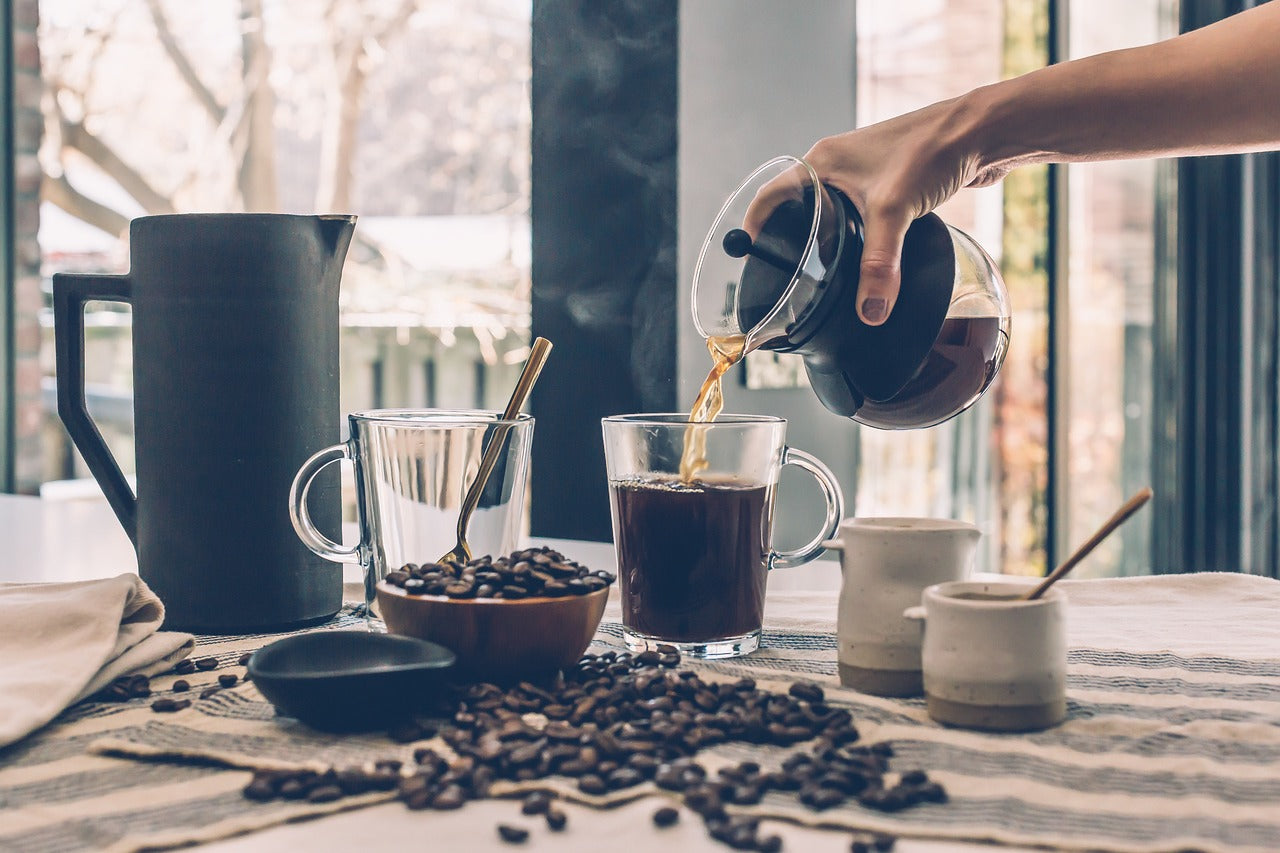Your cart is empty
Looks like you haven't added anything to your cart yet

" Coffee is always a good idea"
Coffee can offer a variety of positive benefits for older adults, contributing to both physical and mental well-being. Here are some of the key ways coffee can be beneficial:
Boosts Cognitive Health
The caffeine in coffee can enhance concentration and mental clarity, helping older adults stay sharp throughout the day. Regular coffee consumption is associated with a lower risk of Alzheimer's and Parkinson's diseases, likely due to its antioxidant and neuroprotective properties.
Supports Physical Activity
Coffee provides a natural energy boost, which can motivate older adults to stay active and engage in light exercise or daily tasks. For those who exercise, caffeine can improve endurance and reduce muscle fatigue, encouraging a more active lifestyle.
Provides Essential Antioxidants
Coffee is one of the richest sources of antioxidants in the diet, such as polyphenols and chlorogenic acid. These compounds help fight oxidative stress and inflammation, which are linked to aging and chronic diseases.
Protects Cardiovascular Health
Moderate coffee consumption may lower the risk of heart disease and stroke. It supports healthy blood vessel function and reduces inflammation, contributing to overall cardiovascular health.
Lowers Risk of Type 2 Diabetes
Studies show that regular coffee drinkers may have a reduced risk of type 2 diabetes. Coffee can improve insulin sensitivity and regulate blood sugar levels, especially when consumed without added sugar.
Enhances Social Connections
Coffee is often enjoyed as part of social activities. Sharing a cup of coffee with friends or family provides opportunities for connection, reducing feelings of loneliness and promoting emotional well-being.
Supports Digestive Health
For some, coffee can stimulate digestion and promote regularity. However, older adults with sensitive stomachs might benefit from low-acid coffee or decaffeinated options.
Tips for Safe Coffee Consumption
Limit intake to 1–3 cups per day to avoid potential side effects like sleep disturbances or jitteriness.
Some people may experience acid reflux or increased heart rate from caffeine. Adjust consumption as needed.
Pair coffee with water to ensure proper hydration, especially in older adults who may be prone to dehydration.
Let's talk about the most common brewing methods
Drip Coffee Maker (Auto Drip)
Drip coffee is a brewing method where hot water is poured over ground coffee, allowing it to slowly pass through a filter and into a carafe or cup. This method is commonly used in automatic coffee makers and pour-over setups. The process extracts flavors gradually, producing a smooth, well-balanced cup of coffee with moderate body and acidity. Drip coffee is known for its convenience, consistency, and ability to make multiple servings at once. It is one of the most popular brewing methods worldwide.
Taste Profile : Balanced and mild, ideal for larger quantities.
Best For : Convenience and consistent brewing.
French Press (Press Pot)
French press coffee is a brewing method that involves steeping coarsely ground coffee in hot water before pressing the grounds down with a plunger. This method uses a cylindrical glass or stainless steel container with a mesh filter, allowing natural oils and fine particles to remain in the brew. The result is a rich, full-bodied coffee with a bold flavor and slightly thicker texture compared to drip coffee. French press coffee is appreciated for its simplicity, deep flavor extraction, and the ability to control brewing variables like steeping time and grind size.
Taste Profile : Full-bodied and rich, with some sediment.
Best For : Those who enjoy robust flavors and don’t mind sediment.
Espresso Machine
Espresso machine coffee is made by forcing hot water through finely ground coffee under high pressure, typically around 9 bars. This process extracts a concentrated shot of coffee with a rich, bold flavor and a thick, velvety crema on top. Espresso serves as the base for many coffee drinks, such as lattes, cappuccinos, and Americanos. Espresso machines can be manual, semi-automatic, or fully automatic, offering varying levels of control over the brewing process. The result is an intense, aromatic coffee with a balanced combination of acidity, sweetness, and bitterness.
Taste Profile : Intense, bold, and smooth with crema on top.
Best For : Espresso lovers or as a base for lattes and cappuccinos.
Cold Brew
Cold brew coffee is made by steeping coarsely ground coffee beans in cold or room-temperature water for an extended period, typically 12 to 24 hours. This slow extraction process results in a smooth, naturally sweet, and less acidic coffee compared to traditional hot brewing methods. Once steeped, the coffee is strained to remove the grounds, producing a concentrated brew that can be served over ice, diluted with water or milk, or used as a base for flavored coffee drinks. Cold brew is known for its refreshing, mellow taste and can be stored in the refrigerator for several days without losing its flavor.
Flavor : Smooth, slightly sweet, and less acidic.
Best for : Iced coffee and a more mellow, refreshing brew.
Pour-Over
Pour-over coffee is a manual brewing method where hot water is slowly poured over ground coffee in a filter, allowing it to drip into a carafe or mug below. This technique gives the brewer precise control over factors like water temperature, pour speed, and extraction time, resulting in a clean, well-balanced cup with bright flavors and pronounced aromas. Popular pour-over devices include the Hario V60, Chemex, and Kalita Wave. The process highlights the coffee’s natural characteristics, making it a favorite among specialty coffee enthusiasts for its clarity and depth of flavor.
Flavor : Bright, clean, and complex, with excellent clarity of flavor.
Best for : Precision and control over the brew, often preferred by coffee aficionados.
"Life happens, Coffee helps"
- Choosing a selection results in a full page refresh.






